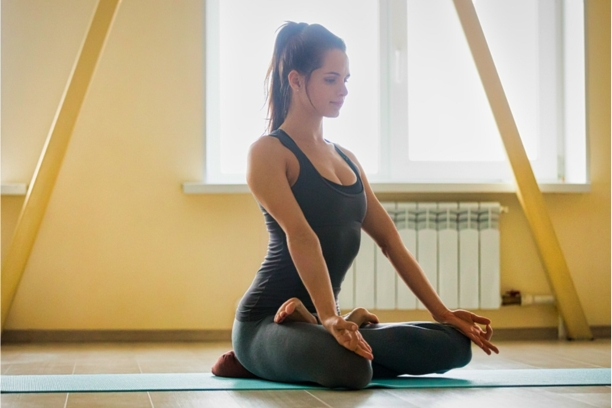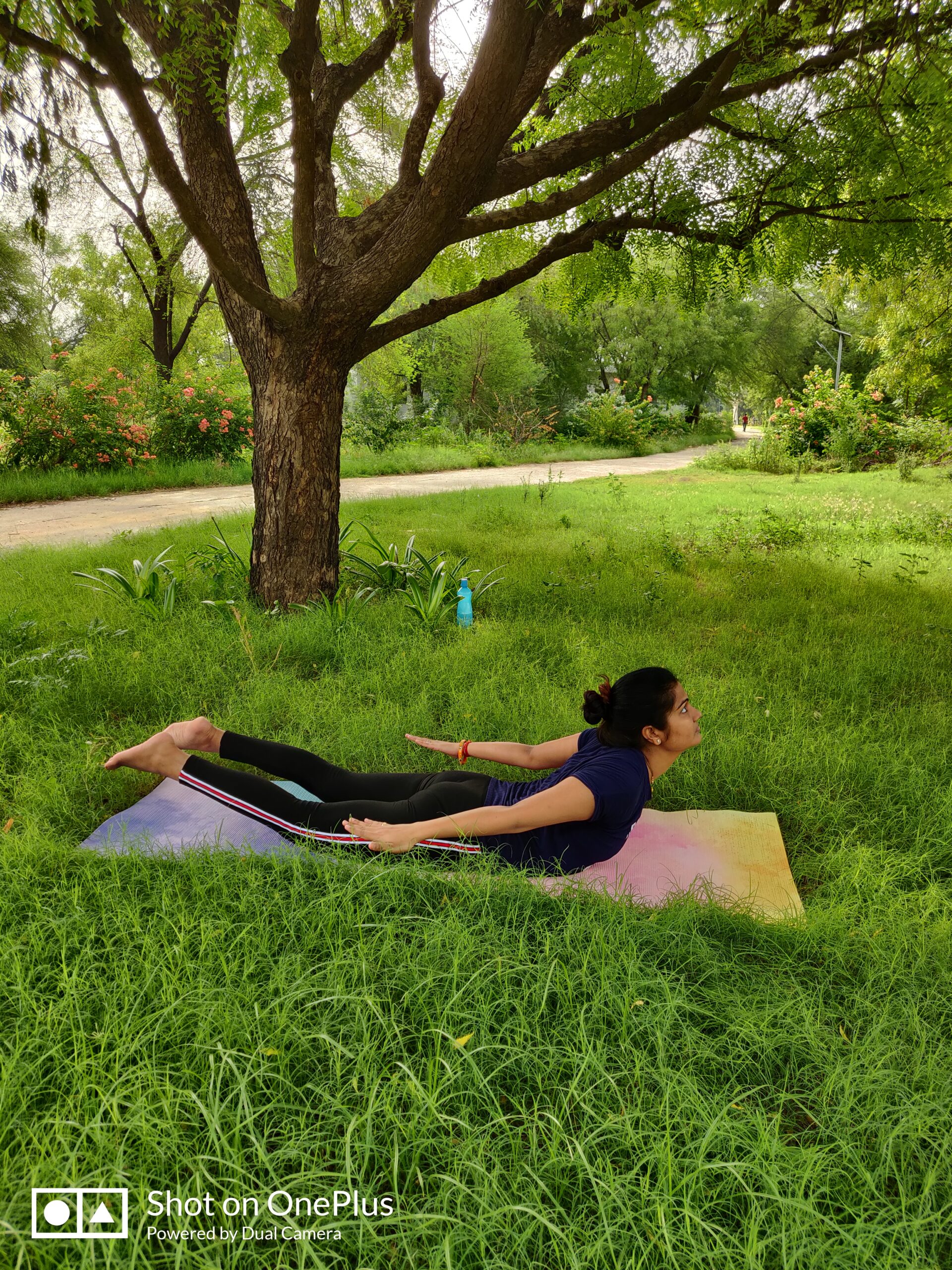Pranayama: A Comprehensive Guide to Breathing Exercises
Exploring the Benefits of Pranayama Breathing Exercises Pranayama, the ancient yogic science of breath control, transcends the mere act of inhaling and exhaling. It delves into the profound connection between breath, life force (prana), and well-being. This comprehensive guide unravels the intricate tapestry of Pranayama, offering a detailed exploration of various breathing exercises that beckon a journey toward enhanced vitality and mental clarity.
Understanding Pranayama: The Breath of Life
The Philosophy of Prana
Pranayama finds its roots in the philosophy that breath is more than a physiological function—it is a carrier of vital energy. In yogic terms, prana is the life force that animates all living things. Pranayama seeks to harness and regulate this vital energy, creating a harmonious flow that nourishes the body, calms the mind, and elevates spiritual awareness.
Foundation Breathing Techniques
1. Diaphragmatic Breathing (Dirga Pranayama)
Technique:
- Sit comfortably or lie down.
- Inhale deeply through the nose, expanding the diaphragm.
- Exhale slowly and completely through pursed lips.
- Repeat, focusing on the rhythmic expansion and contraction of the diaphragm.

Benefits:
- Enhances lung capacity.
- Reduces stress and anxiety.
- Promotes relaxation.
2. Nadi Shodhana (Alternate Nostril Breathing)
Technique:
- Sit in a comfortable position.
- Use the right thumb to close the right nostril and inhale through the left nostril.
- Close the left nostril with the ring finger, release the right nostril, and exhale.
- Inhale through the right nostril, close it, release the left nostril, and exhale.
- Repeat, alternating nostrils.
Benefits:
- Balances the left and right hemispheres of the brain.
- Calms the nervous system.
- Enhances mental clarity.
Intermediate Pranayama Practices
3. Kapalabhati (Skull-Shining Breath)
Technique:
- Sit with a straight spine.
- Inhale deeply through the nose.
- Exhale forcefully and quickly through the nose by contracting the abdominal muscles.
- Allow the inhalation to happen passively.
Benefits:
- Energizes the body.
- Cleanses the respiratory system.
- Improves focus and concentration.
4. Bhramari (Bee Breath)
Technique:
- Sit comfortably and close your eyes.
- Inhale deeply through the nose.
- Exhale slowly while making a humming sound like a bee.
- Feel the vibration in the head and chest.
Benefits:
- Calms the mind and reduces stress.
- Relieves tension and headaches.
- Cultivates a sense of inner peace.
Advanced Pranayama Techniques
5. Ujjayi Pranayama (Victorious Breath)
Technique:
- Inhale deeply through the nose, slightly constricting the back of the throat.
- Exhale slowly through the nose with the same constriction, creating a soft sound.
- Maintain equal duration for inhalation and exhalation.

Benefits:
- Increases oxygenation.
- Builds internal body heat.
- Promotes mindfulness.
6. Sheetali Pranayama (Cooling Breath)
Technique:
- Roll the tongue into a tube or purse the lips.
- Inhale slowly through the tongue or pursed lips.
- Exhale through the nose.
Benefits:
- Cools the body and reduces stress.PranayamaMastery
- Balances the nervous system.
- Alleviates digestive issues.
Exploring Pranayama Variations
7. Agni Sara (Fire Essence)
Technique:
- Stand with feet shoulder-width apart.
- Exhale forcefully, drawing the abdomen inward.
- Perform quick contractions of the abdominal muscles.
- Inhale and relax the abdomen.
Benefits:
- Strengthens the abdominal muscles.
- Stimulates digestion and metabolism.
- Enhances core stability.
8. Anulom Vilom (Alternate Nostril Breathing – Advanced)
Technique:
- Inhale through the left nostril.
- Close both nostrils and hold your breath briefly.
- Exhale through the right nostril.
- Inhale through the right nostril, hold briefly and exhale through the left nostril.
Benefits:
- Balances the nadis (energy channels).
- Increases lung capacity.
- Deepens concentration.
Fusion Practices: Yoga Asanas and Pranayama
9. Yogic Breath of Joy
Technique:
- Stand with feet shoulder-width apart.
- Inhale deeply while raising your arms.
- Exhale forcefully, bending the knees and swinging the arms down.
- Repeat in a flowing, rhythmic motion.

Benefits:
- Boosts energy and uplifts mood.
- Enhances lung expansion.
- Encourages a joyful state of being.
10. Bhastrika (Bellows Breath) with Bhramari (Bee Breath)
Technique:
- Perform rapid Bhastrika breath for 30 seconds.
- Transition into Bhramari breath, making a humming sound for 1 minute.
- Repeat the sequence for 3 rounds.
Benefits:
- Increases oxygenation and vital energy.
- Calms the nervous system.
- Cultivates mental focus.
Pranayama in Specialized Practices
11. Nauli Kriya (Abdominal Massage)
Technique:
- Stand with feet apart, hands on thighs.
- Exhale completely, and contract and roll the abdominal muscles.
- Hold the contraction briefly.
- Release and inhale.

Benefits:
- Massages and tones abdominal organs.
- Enhances digestion and elimination.
- Activates the solar plexus.
12. Kumbhaka (Breath Retention)
Technique:
- Inhale deeply through the nose.
- Retain the breath comfortably.
- Exhale slowly and completely.
- Gradually extend the duration of retention over time.
Benefits:
- Increases lung capacity.
- Develops mental discipline.
- Enhances respiratory efficiency.
Deepening the Meditation Connection
13. Dirgha Shvana (Deep Yogic Breath)
Technique:
- Inhale deeply, expanding the chest and abdomen.
- Exhale slowly and completely, drawing the abdomen inward.
- Focus on the breath, extending the inhalation and exhalation.
Benefits:
- Prepares the mind for meditation.
- Calms the nervous system.
- Cultivates mindfulness.
14. Bhakti Pranayama (Devotional Breath)
Technique:
- Inhale deeply, visualizing divine energy entering.
- Exhale, surrendering any stress or tension.
- Cultivate a sense of devotion and gratitude with each breath.
Benefits:
- Deepens spiritual connection.
- Nurtures a heart-centered focus.
- Promotes emotional balance.
Beyond the Basics: Advanced Pranayama Practices
15. Chandrabhedi Pranayama (Left Nostril Breathing)
Technique:
- Sit comfortably in a meditative posture.
- Close the right nostril with the right thumb.
- Inhale slowly and deeply through the left nostril.
- Close the left nostril with the ring finger and exhale through the right nostril.
- Repeat, maintaining a slow and controlled breath cycle.
Benefits:
- Calms the nervous system.
- Reduces excess heat in the body.
- Enhances mental clarity and focus.
16. Suryabhedi Pranayama (Right Nostril Breathing)
Technique:
- Sit comfortably with a straight spine.
- Close the left nostril with the ring finger.
- Inhale slowly and deeply through the right nostril.
- Close the right nostril with the right thumb and exhale through the left nostril.
- Repeat, maintaining a steady and controlled breath rhythm.
Benefits:
- Activates the sympathetic nervous system.
- Increases energy and vitality.
- Promotes a sense of alertness and concentration.
Harmonizing the Lunar and Solar Energies
17. Nadi Shuddhi Pranayama (Channel Purification Breath)
Technique:
- Sit in a comfortable position.
- Perform alternate nostril breathing (Nadi Shodhana) with breath retention after each inhalation and exhalation.
- Gradually extend the duration of breath retention as you progress.
Benefits:
- Balances the ida and pingala nadis (energy channels).
- Clears energetic blockages in the subtle body.
- Enhances overall vitality and well-being.
18. Samavritti Pranayama (Equal Ratio Breath)
Technique:
- Inhale for a count of four.
- Retain the breath for a count of four.
- Exhale for a count of four.
- Maintain a consistent count for inhalation, retention, and exhalation.
Benefits:
- Calms the mind and reduces stress.
- Regulates the autonomic nervous system.
- Establishes a sense of inner balance.
The Rhythmic Dance of Breath and Movement
19. Viloma Pranayama (Interrupted Breath)
Technique:
- Inhale in segments, pausing briefly between each inhalation.
- Exhale smoothly and continuously.
- Gradually increase the number of segments during inhalation.

Benefits:
- Expands lung capacity.
- Enhances respiratory endurance.
- Develops mindful breath control.
20. Kaki Mudra Pranayama (Crow’s Beak Breath)
Technique:
- Sit comfortably with a straight spine.
- Inhale deeply and exhale forcefully through pursed lips.
- Imagine making a “cawing” sound like a crow during exhalation.
- Repeat for several breath cycles.
Benefits:
- Strengthens respiratory muscles.
- Clears excess mucus from the respiratory system.
- Invigorates the entire respiratory tract.
Integration into Daily Life
Mindful Breath Awareness
Beyond formal practice, cultivate awareness of the breath in daily activities. Whether walking, working, or engaging in routine tasks, maintain a conscious connection with the breath. This mindfulness extends the benefits of Pranayama into the fabric of daily life, fostering a continuous state of presence and vitality.
Progressive Practice
As you explore advanced Pranayama techniques, progress gradually. Begin with foundational practices, gradually incorporating more intricate variations as your breath control and capacity develop. Consistency and patience are the keys to unlocking the deeper dimensions of Pranayama.
Read More: Naturopathy and Yoga Practices for Vitality




